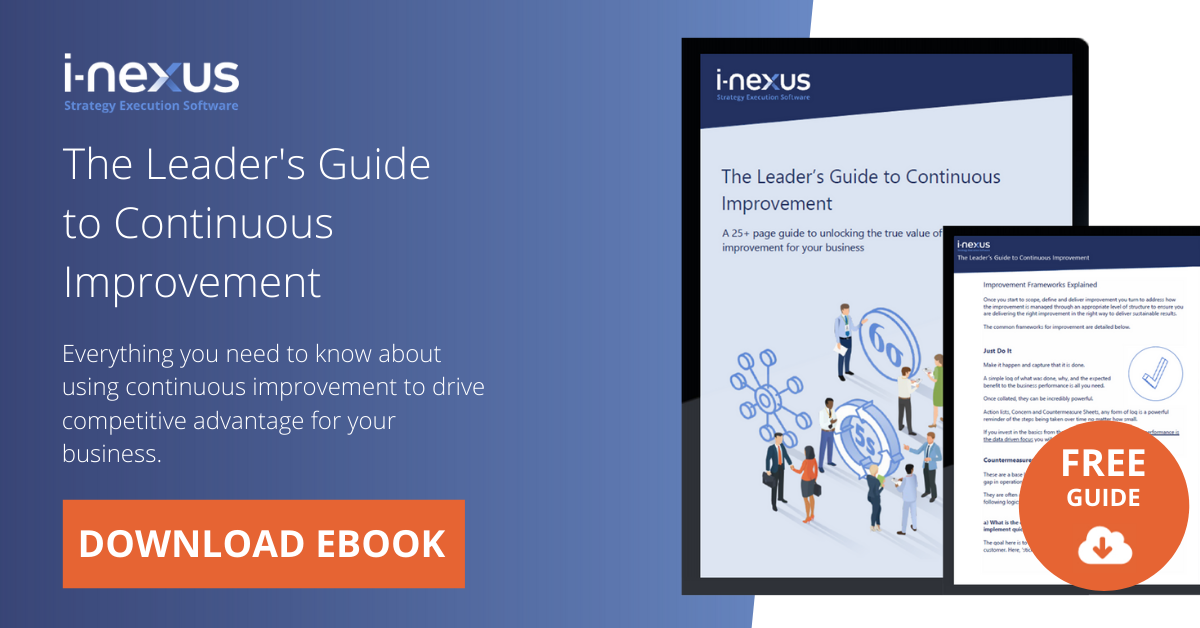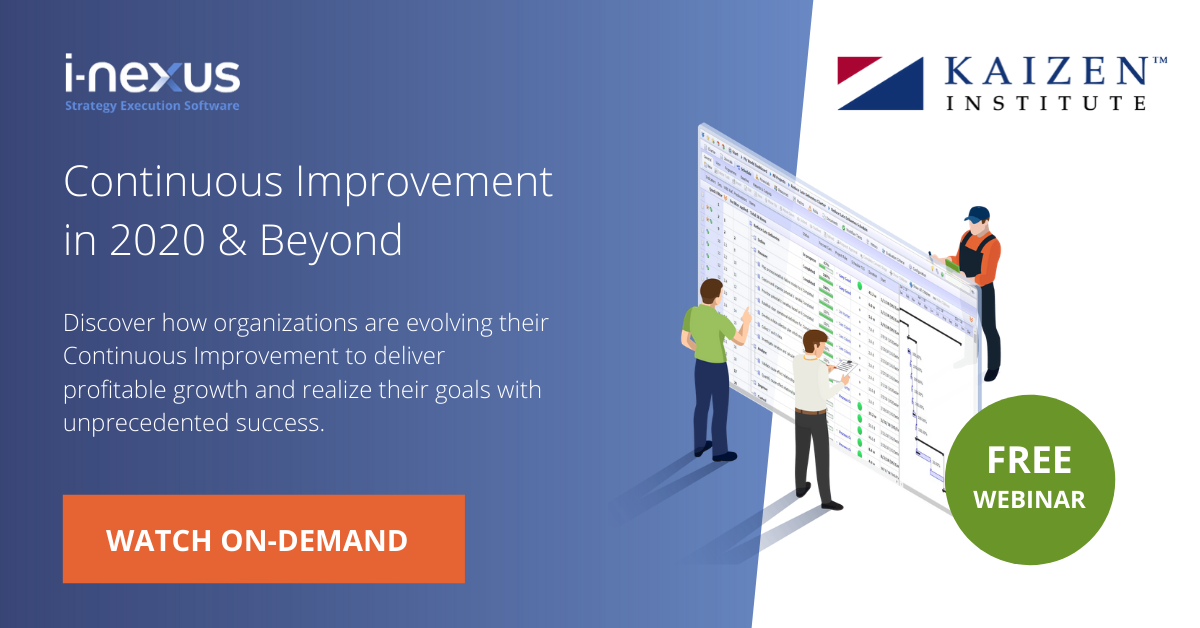How to create key performance questions
A Key Performance Question (KPQ) focuses on and highlights what the organization needs to know in terms of executing strategic objectives, so enabling a full and focused discussion on how well the organization is delivering to these objectives.
An innovation of LinkedIn influencer Bernard Marr (with whom I co-authored the book Doing More with Less, from which this article is drawn), is a powerful ten-step guide for creating KPQs, which was used successfully by many of the case study organizations within the book, as well as many others.
1. Design between one and three KPQs for each strategic objective on the Strategy Map
2. Ensure KPQ’s are performance-related
3. Engage people in the creation of your KPQ’s
4. Create short and clear KPQ’s
5. KPQ’s should be open questions
6. KPQ’s should focus on the present and future
7. Refine and improve your KPQ’s as you use them
8. Use your KPQ’s to design relevant and meaningful performance indicators
9. Use KPQ’s to refine and challenge existing performance indicators
10. Use KPQ’s to report, communicate and review performance
To understand the key to successfully connecting your KPQs to operational performance, and projects to your strategic goals, be sure to download a free copy of the eBook, ‘The key to Strategy Execution’ today – the perfect accompaniment to this ‘how to’. Click here to download your copy.
We will now discuss each of these ten steps in a little more detail and provide more practical advice for creating good KPQ’s. But first note the words of Alphabet Executive Chairman Eric Schmidt, while Chief Executive Officer of Google, “We run the company by questions, not by answers. In the strategy process, we’ve so far formulated 30 questions that we have to answer […] You ask it as a question, rather than a pithy answer, and that stimulates conversation. Out of the conversation comes innovation. Innovation is not something that I just wake up one day and say “I want to innovate.” I think you get a better innovative culture if you ask it as a question.”
1. Design between one and three KPQs for each strategic objective on your strategy map
Key questions should be based on what matters in your organization – your strategy. Once you have clarified your strategic objectives and captured them within a Strategy Map you can start designing KPQ’s.
We recommend that you design between one and three KPQs for each strategic objective on your Strategy Map. As with the logic that it is better to restrict a Strategy Map to a critical few objectives (so to enhance focus and clarity as to what’s important), the fewer KPQs you have the better – and for the same reasons of focus and clarity.
2. Ensure KPQ’s are performance-related
A KPQ has to be about performance. The aim is to design questions you need to regularly revisit and answer them to better manage your organization. Performance-related questions are those that enable an understanding of how well you are implementing your strategic objectives and to what extent you are meeting your objectives and targets. KPQ’s are used to provide a performance context to KPIs and help to more effectively prioritize the indicators chosen.
3. Engage people in the creation of your KPQ’s
KPQ’s should not be designed in the boardroom alone. Designing KPQ’s is a great opportunity to engage everyone in the organization as well as some external stakeholders. Try to involve people in the process and ask them what question they would see as most relevant. Once you have designed a list of KPQ’s, take this back to the subject matter experts or different parts within and outside the organization to collect feedback (see the case example below).
4. Create short and clear KPQ’s
A good KPQ is relatively short, clear, and unambiguous. It should only contain one question. We often produce a string of questions which makes it much harder to guide meaningful and focused data collection. The language should be clear and not contain any jargon or abbreviations that external people might not understand. Likewise, try to stay away from management buzzwords and ensure that the question is easy to understand and use language that people in your organization are comfortable with, understand and use.
5. KPQ’s should be open questions
Questions can be divided into two types: closed questions and open questions. Closed questions such as “have we met our budget?” can be answered by a simple “yes” or “no,” without any further discussion or expansion on the issue. However, if we ask an open question such as “how well are we managing our budget?”, the question triggers a wider search for answers and seeks more than a “yes” or “no” response. Open questions make us reflect, they engage our brains to a much greater extent, and they invite explanations and ignite discussion and dialogue. Whenever possible, KPQ’s should be phrased as open questions.
6. KPQ’s should focus on the present and future
Questions should be phrased in a way that addresses the present or future: “To what extent are we increasing our market share?” instead of questions that point to the past, e.g. “Has our market share increased?” By focusing on the future, we open up a dialogue that allows us to “do” something about the future. We then look at data in a different light and try to understand what the data and management information means for the future. This helps with the interpretation of the data and ensures we collect data that helps to inform our decision making and performance improvement.
7. Refine and improve your KPQ’s as you use them
Once KPQ’s has been created, it is worth waiting to see what answers come back – i.e. how well the KPQs help people to make better-informed decisions. Once they are in use, it is possible to refine them to improve their focus even more. This is a natural process of learning and refinement, and organizations should expect some significant change in the first 12 months of using KPQ’s. Experience has shown that after about 12 months, the changes are less frequent and the KPQs become much better.
8. Use your KPQ’s to design relevant and meaningful performance indicators
Once you have designed a set of good KPQ’s linked to your strategic objectives and following the above guidelines, you can use them to guide the design of meaningful and relevant performance indicators. KPQ’s enable organizational leaders to identify the best data and management information they need to collect to help answer the key performance questions and therefore properly assess the progress of a strategic objective.
9. Use KPQ’s to refine and challenge existing performance indicators
KPQ’s can be used to challenge and refine any existing performance indicators. Linking them to your KPIs can allow you to put them into context and justify their relevance.
10. Use KPQ’s to report, communicate and review performance
KPQ’s can also be used to improve the reporting, communication and review of performance information. In performance reporting and communications, organizations should always put the KPQ’s with the performance data that is being presented. This way the person who looks at the data understands the purpose of why this data is being collected and is, therefore, able to put it into context. Furthermore, it allows senior managers to reflect on the answers.
Now that you’ve formed your Key Performance Questions, why not try StratexAssess, the free strategy deployment assessment, designed to help you target areas of weakness as you move forward with driving greater performance in your business. Click here to start your assessment.
Case example: Northumbria Healthcare Foundation Trust
Such was the importance placed on KPQs by the UK’s Northumbria Healthcare Foundation Trust (that has 9,500 employees and had about 730,000 patient contacts in 2015/16) that it spent about six months on their formulation at the Board level.
Formulating the KPQ’s was a highly inclusive approach that involved many groups of employees, including members of the 55-member strong clinical policy group, meeting with Bernard Marr n order to debate and refine the KPQ’s and then for these insights to be fed-back to the Board for final approval. “We had to make sure that the Board agreed to the KPQ’s as these would be the questions on which the Board would base its strategic plans,” said Chief Operation Officer Ann Farrar. “If we did not get the KPQ’s right and agreed at the Board level, we knew we would not be able to transform how the Board worked or to get the business units and the organization to move forward.”
Farrar is completely convinced of the value of KPQ. “If we get the KPQ’s right then we will know exactly where we need to focus to ensure the delivery of the strategic objectives,” she says. “It has also forced the senior clinicians, for example, to be clear as to what the answer to the question will be. With that understanding, we can better identify the appropriate KPIs and launch the most influential action plans. It makes strategic performance management much more real and relevant to senior clinicians,” she adds.”
As an example of KPQ’s, consider the objective “Deliver world-class quality emergency care and other healthcare services.” This is supported by the KPQ’s of “to what extent are we operating to the highest standards” and “to what extent are we consistent in our service delivery.” A third KPQ is “to what extent are our (core) processes world-class.” About the later KPQ, Farrar makes this insightful observation. “If we use the term world-class, then we have to define it. Too often “world-class” is a term that is used without a sense of what it means. If we use it in a question, then we have to be clear as to what the answer will be in terms of knowing that we are world-class,” she says. “This is a difficult challenge, as in many instances we will not have the data. But the discipline in finding the data and identifying the answer will be extraordinarily useful in significantly improving our performance to the point where we can confidently assess that we are indeed world-class.”
Note that the 2015/16 Annual Report highlighted the outstanding success of Northumbria Foundation Trust. Here are just some examples:
· Rated outstanding by the Care Quality Commission (CQC) following its inspection in November 2015 (only the 4th Trust ever to receive this accolade)
· Best place to work in the National Health Service (NHS): for 2015: Nursing Times in partnership with NHS employers
· 97% of patients overall would be extremely likely or likely to recommend the trust
· 99% of patients reported they were treated with respect and dignity at all times
· 95% of staff feel their role makes a difference to patients
· Finally, in the spirit of doing more with less, the trust recorded a surplus for the year of £11.3 million.
For some additional material, extracted from the book: Doing More with Less: measuring, analyzing performance in the government and not-for-profit sector: Bernard Marr, James Creelman (foreword from Dr David Norton), Palgrave Macmillan, 2014.



Comments
No comments currently.